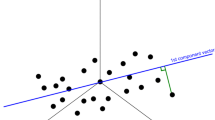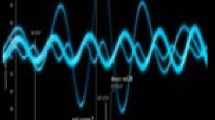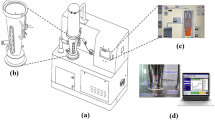Abstract
The purpose of this study was to demonstrate acoustic resonance spectrometry (ARS) as an alternative process analytical technology to near infrared (NIR) spectroscopy for the quantification of active pharmaceutical ingradient (API) in semi-solids such as creams, gels, ointments, and lotions. The ARS used for this research was an inexpensive instrument constructed from readily available parts. Acoustic-resonance spectra were collected with a frequency spectrum from 0 to 22.05 KHz. NIR data were collected from 1100 to 2500 nm. Using 1-point net analyte signal (NAS) calibration, NIR for the API (colloidal oatmeal [CO]) gave anr 2 prediction accuracy of 0.971, and a standard error of performance (SEP) of 0.517%CO. ARS for the API resulted in anr 2 of 0.983 and SEP of 0.317%CO. NAS calibration is compared with principal component regression. This research demonstrates that ARS can sometimes outperform NIR spectrometry and can be an effective analytical method for the quantification of API in semi-solids. ARS requires no sample preparation, provides larger penetration depths into lotions than optical techniques, and measures API concentrations faster and more accurately. These results suggest that ARS is a useful process analytical technology (PAT).
Similar content being viewed by others
References
NIH NLM Specialized Information Services. Food and Drug Administration Actions: Recalls and Field Corrections 2002–May 12, 2004.National Institutes of Health Web site. Available at: http:// householdproducts.nlm.nih.gov/NLM_FDARecalls.htm#rayblock1. Accessed: April 1, 2005.
USDA. Process Analytical Technology (PAT) Initiative.US Food and Drug Administration Web site. Available at: http://www.fda.gov/eder/ OPS/PAT.htm. Accessed: April 1, 2005.
Mariani E, Villa C, Neuhoff C, Dorato S. Derivatization procedure and HPLC determination of 2-ethoxyethanol in cosmetic samples.Int J Cosmet Sci. 1992;21:199–205.
Westgate E, Sherma J. Determination of the sunscreen oxybenzone in lotions by reversed-phase HPTLC with ultraviolet absorption densitometry.J Liq Chromatogr Relat Technol. 2000;23:609–615.
Sabo M, Gross J, Rosenberg I. Quantitation of dimethicone in lotions using Fourier transform infrared spectral substraction.J Soc Cosmet Chem. 1984;35:273–281.
Grunewald H, Kurowski C, Timm D, Grummisch U, Meyhack U. Rapid non-destructive raw material identification in the cosmetic industry with near-infrared spectroscopy.J Near Infrared Spectrosc. 1998;6:215–222.
Alltech Associates. Dimethicone.Alltech Associates Inc Web site. Available at: http://www.alltechweb.com/productinfo/technical/app/ 0048E.pdf. Accessed: April 15, 2005.
Buice R, Pinkston P, Lodder R. Optimization of acoustic-resonance spectrometry for analysis of intact tablets and prediction of dissolution rate.Appl Spectrosc. 1994;48:517–524.
Serris E, Perier-Camby L, Thomas G, Desfontaines M, Fantozzi G. Acoustic emission of pharmaceutical powders during compression.Powder Technol. 2002;128:296–299.
Reynaud P, Dubois J, Rouby D, Fantozzi G. Acoustic emission monitoring of uniaxial pressing of ceramic powders.Ceramics Int. 1992;18:391–397.
Martin LP, Poret JC, Danon A, Rosen M. Effect of adsorbed water on the ultrasonic velocity in alumina powder compacts.Mater Sci Eng A. 1998;252:27–35.
Kaatze U, Wehrmann B, Pottel R. Acoustical absorption spectroscopy of liquids between 0.15 and 3000 MHz. I. High resolution ultrasonic resonator method.J Phys [E]. 1987;20:1025–1030.
Bolotnikov M, Neruchev Y. Speed of sound of hexane + 1-chlorohexane, hexane + 1-iodohexane, and 1-chlorohexane + 1-iodohexane at saturation condition.J Chem Eng Data. 2003;48:411–415.
Lévêque G, Ferrandis J, Van Est J, Cros B. An acoustic sensor for simultaneous density and viscosity measurements in liquids.Rev Sci Instrum. 2000;71:1433–1440.
Ferrandis JY, Leveque G. In situ measurement of elastic properties of cement by an ultrasonic resonant sensor.Cement Concrete Res. 2003;33:1183–1187.
Dukhin AS, Goetz PJ. Acoustic spectroscopy for concentrated polydisperse colloids with high density contrast.Langmuir. 1996;12: 4987–4997.
Dukhin AS, Goetz PJ. Characterization of aggregation phenomena by means of acoustic and electroacoustic spectroscopy.Colloids Surf A: Physicochem Eng Aspects. 1998;144:49–58.
Ramdani A, Cros B, Sidki M, Ferrandis J. Acoustic near field technique for characterization of liquids, bitumen and cement setting.Eur Phys J AP. 2001;15:69–76.
Patois R, Vairac P, Cretin B. Near-field acoustic densimeter and viscosimeter.Rev Sci Instrum. 2000;71:3860–3863.
Prugne Ch, Van Est J, Cros B, Leveque G, Attal J. Measurement of the viscosity of liquids by near-field acoustics.Meas Sci Technol. 1998;9:1894–1898.
Mills TP, Jones A, Lodder RA. Identification of wood species by acoustic-resonance spectrometry using multivariate subpopulation analysis.Appl Spectrosc. 1993;47:1880–1886.
Lai E, Chan B, Chen S. Ultrasonic resonance spectroscopic analysis of microliters of liquids.Appl Spectrosc. 1988;42:526–529.
Medendorp J, Yedluri J, Hammell DC, Ji T, Lodder RA, Stinchcomb AL. Near infrared spectrometry for the quantification of dermal absorption of econazole nitrate and 4-cyanophenol.Pharm Res.
Boelens H, Kok W, Noord O, Smilde A. Performance optimization of spectroscopic process analyzers.Anal Chem. 2004;76:2656–2663.
Lorber A. Error propagation and figures of merit for quantification by solving matrix equations.Anal Chem. 1986;58:1167–1172.
Booksh KS, Kowalski BR. Theory of analytical chemistry.Anal Chem. 1994;66:782a-791a.
Lorber A, Faber K, Kowalski BR. Net analyte signal calculation in multivariate calibration.Anal Chem. 1997;69:1620–1626.
Medendorp JP, Lodder RA. Applications of integrated sensing and processing in spectroscopic imaging and sensing.J. Chemometr. 2006;19:533–542.
Buice R, Lodder RA. Determination of cholesterol using a novel magnetohydrodynamic acoustic-resonance near-IR (MARNI) spectrometer.Appl Spectrosc. 1993;47:887–890.
Fountain W, Dumstorf K, Lowell AE, Lodder RA, Mumper RJ. Near-infrared spectroscopy for the determination of testosterone in thin-film composites.J Pharm Biomed Anal. 2003;33:181–189.
Geladi P, MacDougall D, Martens H. Linearization and scatter-correction for NIR reflectance spectra of meat.Appl Spectrosc. 1985;39:491–500.
Lodder R, Hieftje G. Detection of subpopulations in near-infrared reflectance analysis.Appl Spectrosc. 1988;42:1500–1512.
Lodder R. CD/MP3 Acoustic Resonance Spectrometer.Analytical Spectroscopy Research Group Web site. Available at: http://www.pharm. uky.edu. Accessed: April 5, 2004.
Jolliffe IT.Principal Component Analysis. New York, NY: Springer; 2002.
Hamilton S, Lodder R. Hyperspectral imaging technology for pharmaceutical analysis.Proc Soc Photo-Opt Instrum Eng. 2002; 4626:136–147.
Bear Creek Lumber. Western Red Cedar Physical Properties.Bear Creek Lumber Web site. Available at: http://www.bearcreeklumber. com/generalinfo/onlineliterature/technicalinfohtml/wrcphysicalproperties. html. Accessed: March 1, 2005.
Author information
Authors and Affiliations
Corresponding author
Additional information
Published: July 14, 2006
Rights and permissions
About this article
Cite this article
Medendorp, J., Buice, R.G. & Lodder, R.A. Acoustic-resonance spectrometry as a process analytical technology for the quantification of active pharmaceutical ingredient in semi-solids. AAPS PharmSciTech 7, 59 (2006). https://doi.org/10.1208/pt070359
Received:
Accepted:
Published:
DOI: https://doi.org/10.1208/pt070359




